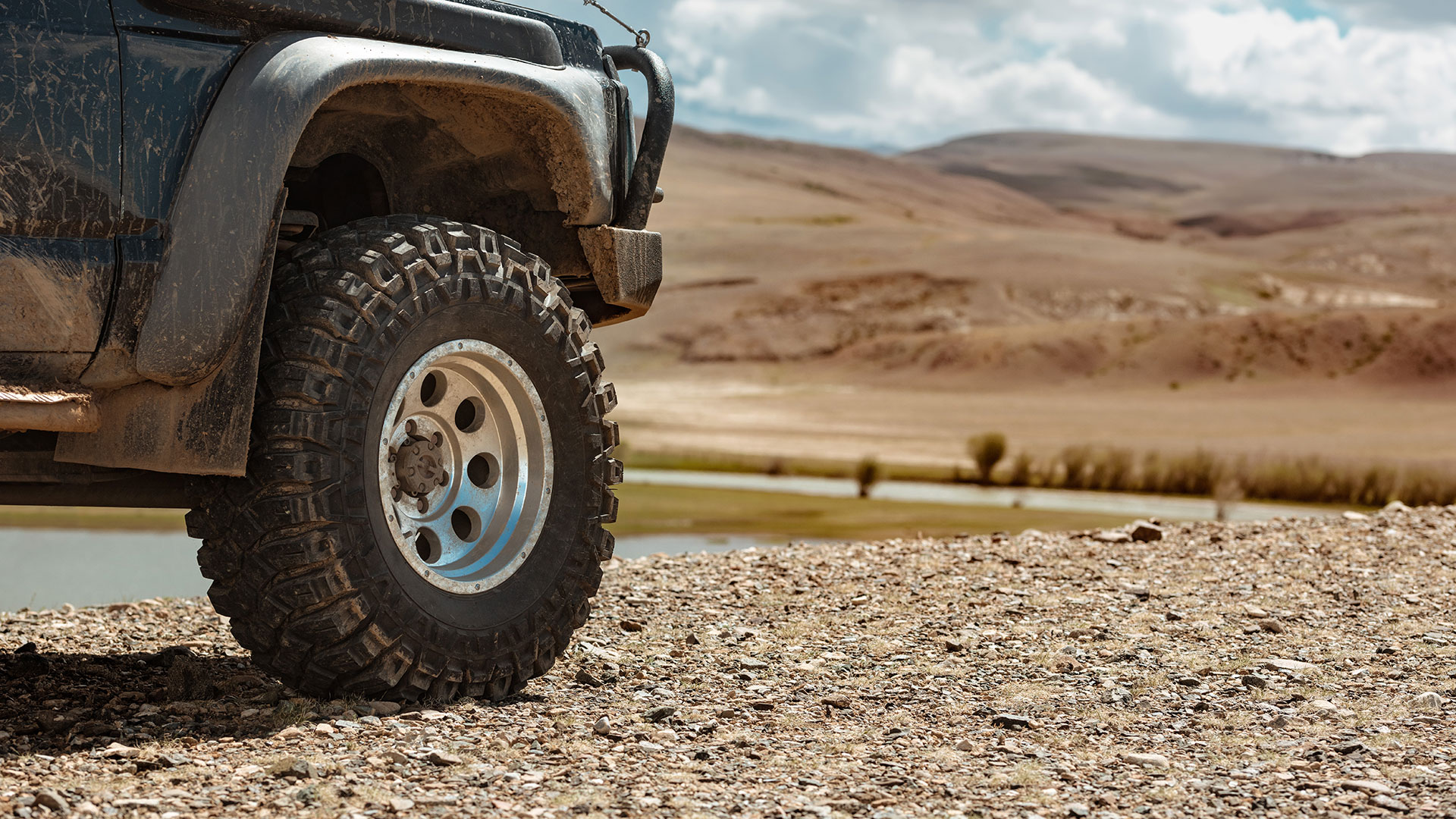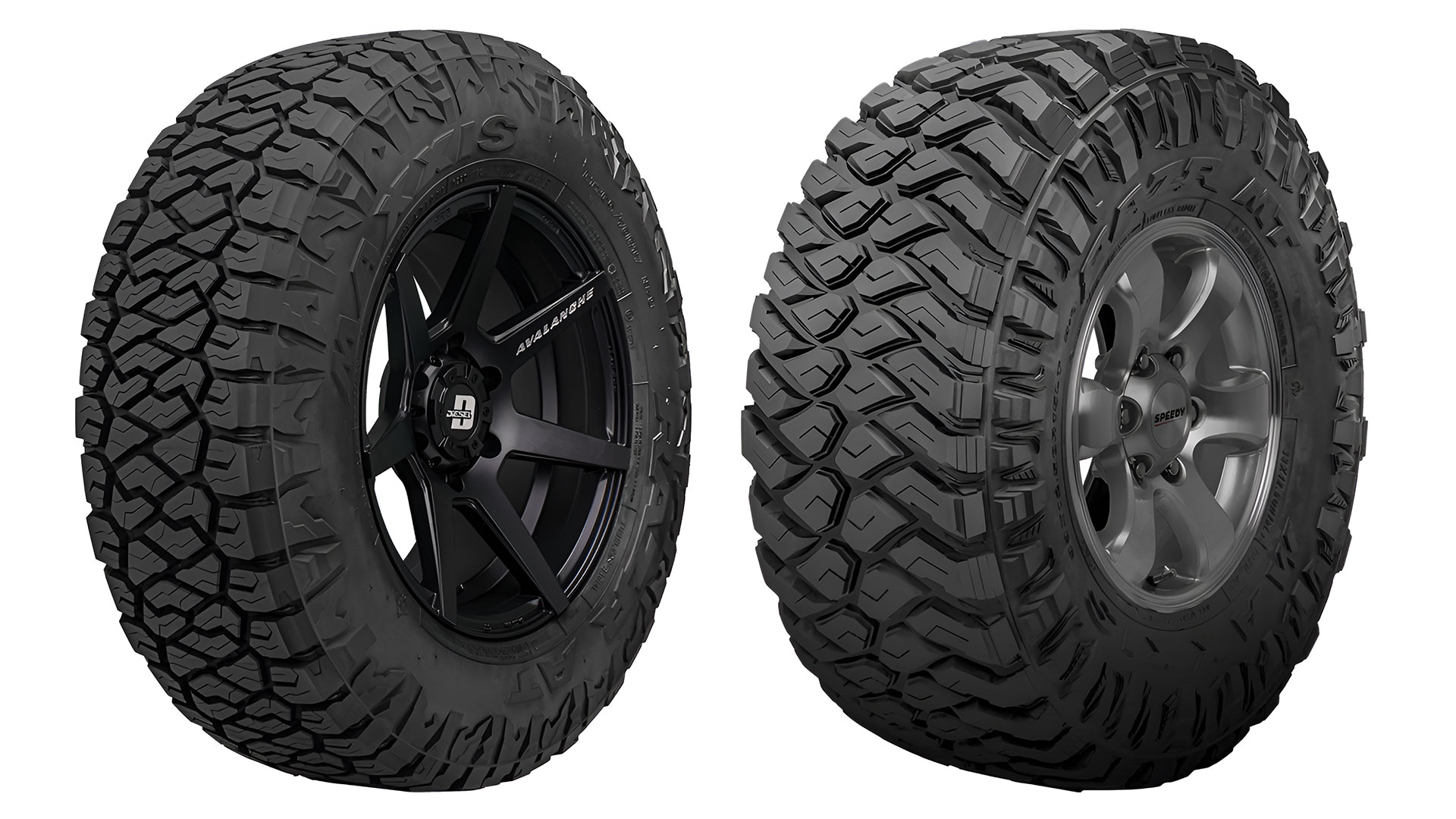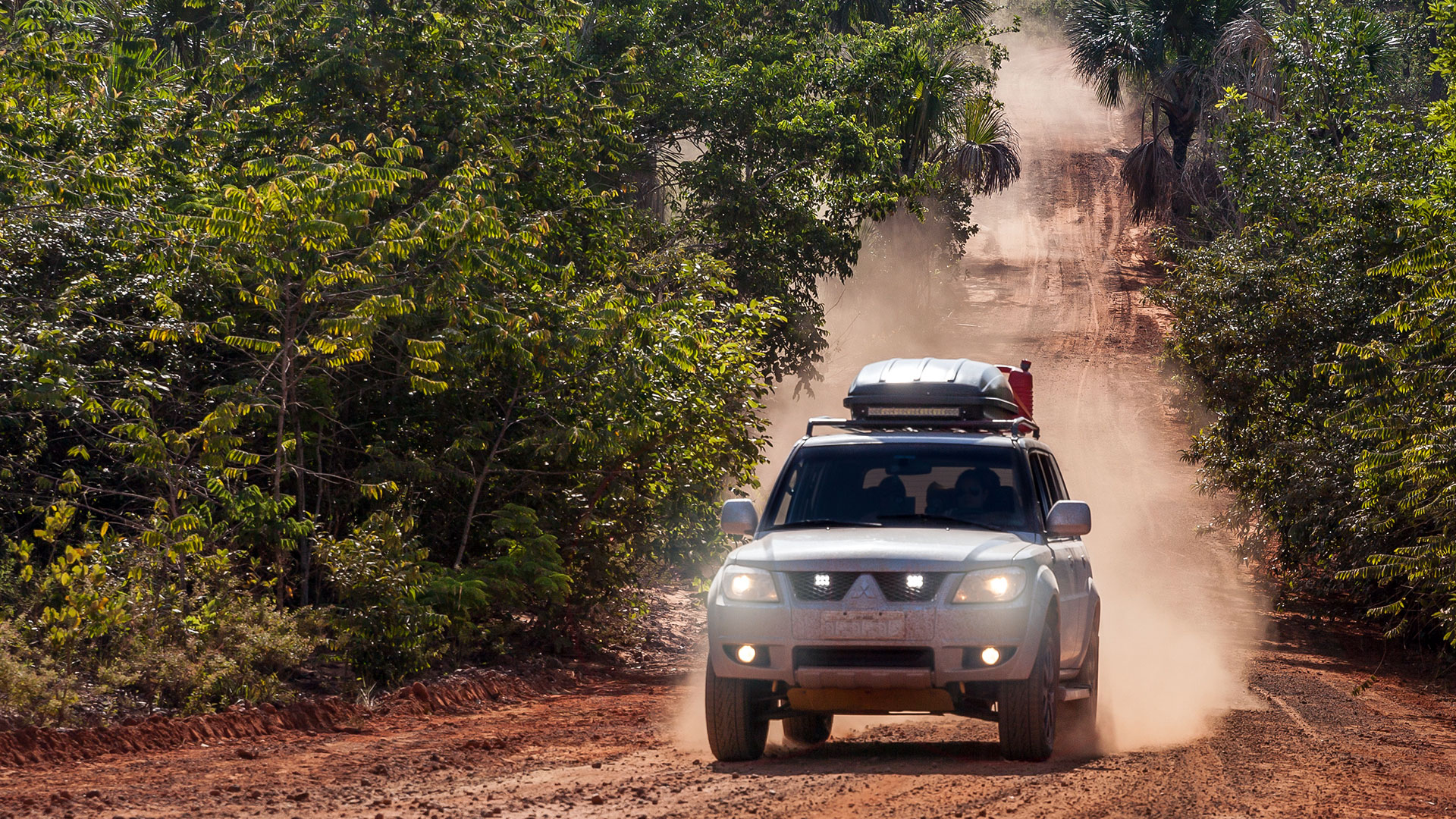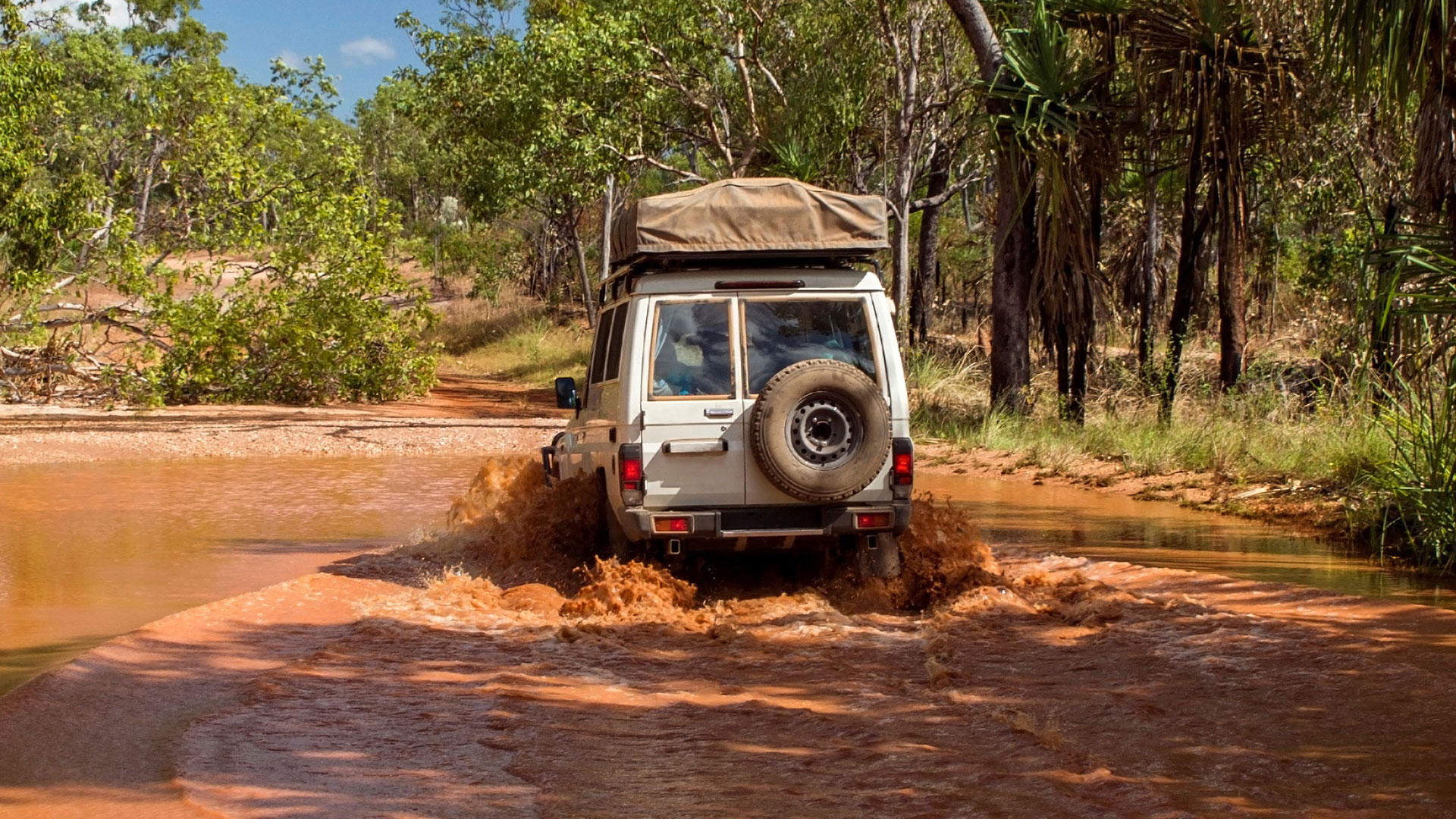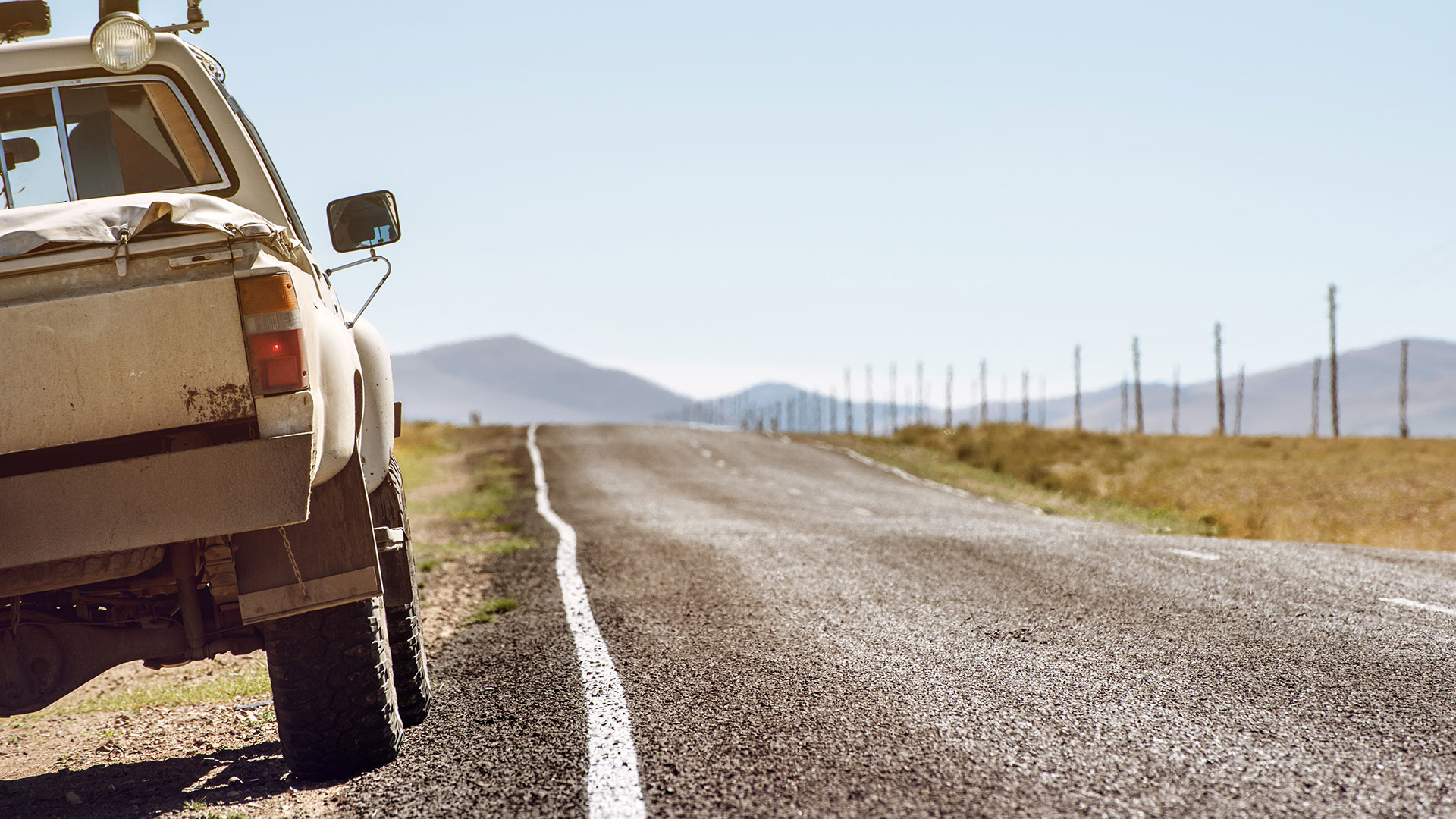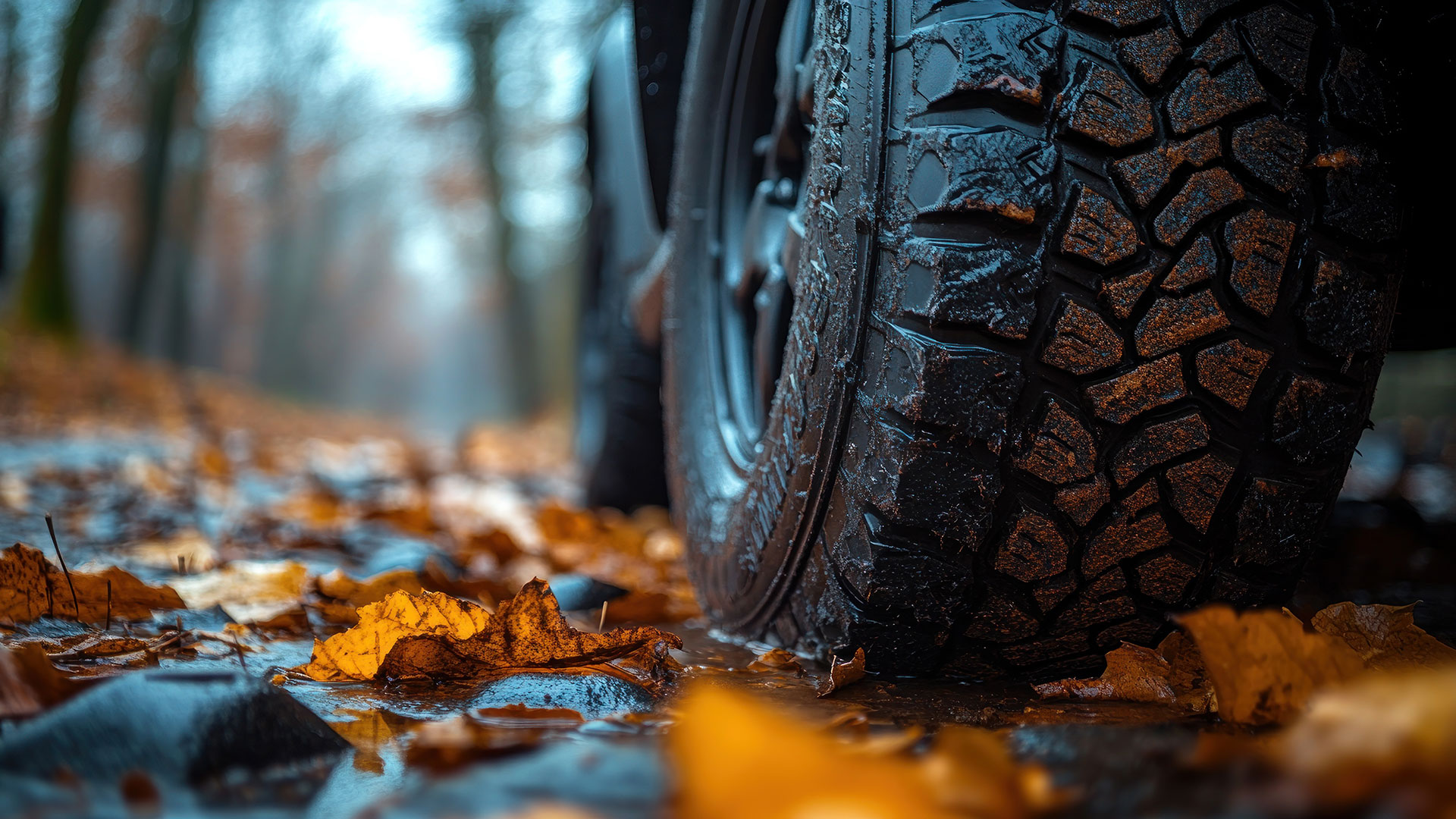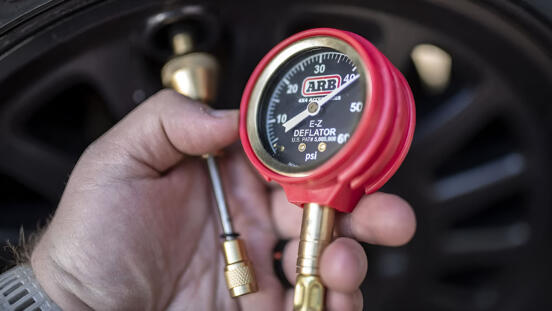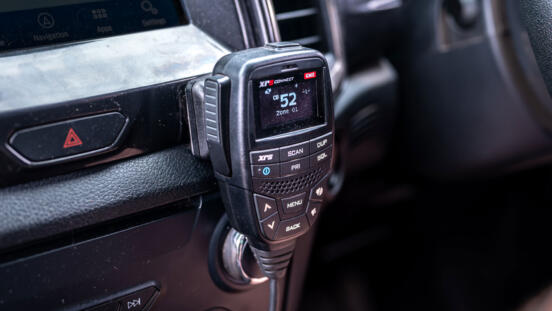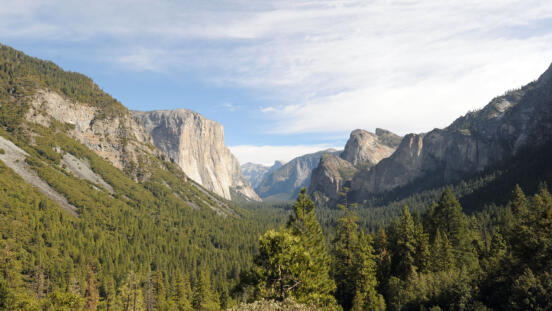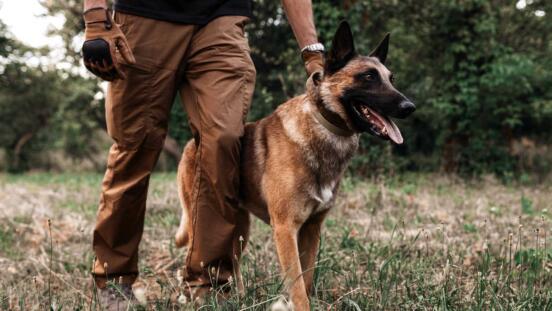They say "There are no solutions, only trade-offs", and this is certainly true of tires. No one tire can be the best on-road and off, best in the dry and wet, softest for the most grip while being the most durable; the list of compromises goes on.
So are mud-terrain or all-terrain the best option for your four-wheel-drive?
Unfortunately, there's a lot of out-of-date information being repeated online. Particularly comments regarding noise and on-road performance, and while much of this was completely valid in the past, improvements in tire technology have significantly closed the gap between mud-terrain and all-terrain tire performance across the board in recent years.
That said, there are still meaningful differences worth considering before committing to your next set of tires, which we'll discuss here. These include:
- Off-road performance
- Loose surfaces - Rocks, gravel, shale, etc.
- Sand
- Mud
- Ruts
- Rock crawling
- On-road performance
- Handling
- Braking
- Fuel economy
- Tire durability
- Road noise, and
- Wet weather
There are countless brands and tires out there that prioritize these in different ways. For the sake of making as much as an 'apples to apples' comparison as possible, the following is based on my experience with Maxxis AT811 RAZR all-terrain (below left), and their MT772 RAZR mud-terrain (below right), both on the same 150 Series Toyota Prado, weighing roughly 2,880kg (6,350lbs) fully loaded.
Note: We won't cover tire pressures for each scenario here, as that's something we've already covered in detail elsewhere: Tire pressures for mud, sand, rock-crawling, and corrugated roads. For the sake of this article, we'll assume you are using appropriate tire pressure for each situation.
Off-road performance
Loose surfaces
This can encompass a few scenarios; gravel roads, shale rock surfaces, dirty rock faces, etc. In any case, what we're talking about here are relatively firm, high-friction surfaces covered by debris causing you to lose traction.
On fairly smooth surfaces, the difference between MT and AT tires is negligible. Gravel gets kicked away by the tires, the layer of dirt gets scraped away, and so on, before the tire reaches the hard base below and can carry you forward.
On uneven surfaces though, mud-terrain tires have the edge, with the larger tread blocks biting into depressions in rock, or wrapping over raised notches.
Sand
Driving on sand is a unique situation. You have literally zero traction, as every grain beneath you is ready to be shoveled out of your tires, and with no hard bottom to eventually reach, with the gas pedal down you can keep 'shoveling' until your chassis bottoms out.
Once you're moving and able to maintain momentum, AT and MT are much the same for beach driving; where they differ is the take-off. Taking off on sand requires a slow, smooth application of power. You're not trying to get "grip", you're trying to gently move forward on the small amount of sand compressed directly beneath your tires without kicking it loose.
Because of the larger tread blocks and wider voids on Mud tires, it's easier to create little shovels and start kicking sand out the rear, compared to All-Terrains with their slightly larger surface area which helps avoid this. For sand, ATs are just a little bit easier to get moving each time.
Mud terrains are still viable on sand, but particular attention has to be paid to your driving style. Too much gas, and you'll bog down quickly. Dropping a few additional PSI with MT tires compared to ATs can help offset this.
A point for all-terrains here.
Mud
It will come as no surprise that mud terrain tires are the winner here. The larger voids will more easily spin clean mud, preventing your tires from turning into slicks, and the larger tread blocks will more aggressively bite into whatever firm(ish) base is available below.
All-terrain can do well in modest amounts of mud, especially where using some speed and momentum is possible, but in deep mud, or where entering with momentum is not possible and you're relying completely on traction, mud-terrains are the clear winner.
Ruts
When off-roading, you're often relying as much on the tire's tread blocks wrapping over objects, as you are on the friction of the tire face on the ground surface. Mud-terrain tires will almost always have more aggressive sidewalls, and this can really shine when navigating ruts as the sidewall tread blocks give you the additional traction of gripping the rut walls, compared to the less aggressive sides of all-terrain tires which will just rub along them.
A point for mud-terrain tires here.
Rock crawling
Bringing together a few of the points we've touched on above, for dedicated rock crawling I think the win has to go to mud-terrains. Once again, the larger tread blocks will provide more bite on indentations and notches where all-terrains relying a little more on friction in the same situation might slip.
Another for MT's.
On-road performance
As much as we're all about off-roading, getting there is an unavoidable part of the journey. When touring, it's not uncommon to do a hundred miles on the blacktop for every few done off-road, so road performance warrants proper consideration.
Handling
For day-to-day driving, I'd say the difference between the two tires on dry roads is negligible when driving to the conditions. Let's be honest, in terms of speed and handling 4x4s are not "performance" vehicles by any stretch of the imagination; they're heavy, often more weighted towards the rear, have a high center of gravity, and suspension systems that are not designed for cornering at speed.
If you're measuring handling against an expectation that in any way resembles a performance road car, you'll be disappointed. If you drive a truck, like a truck, the tires are very similar.
Braking
In the past, one of the primary concerns with mud-terrain tires on-road was greatly reduced braking performance. While there's still some validity to this, modern mud-terrain tire compounds have greatly improved in this area compared to the tires of old.
Comparing the AT811 and MT772 during hard braking at 40km/h, 60km/h, and 80km/h, the mud-terrain consistently took 10-12% further to stop, during 3 tests at each speed. (That's 25mph, 37mph, and 50mph respectively.)
Exactly how important this is is difficult to say. When driving responsibly with an ample buffer between yourself and the car in front, an additional 3-4 meters braking distance isn't likely to make a difference, but in an emergency braking situation, this can easily be the difference between stopping a meter short of a collision or crashing a meter through one.
A few meters can turn a near miss into an accident, or a minor accident into a major one. This is something you'll have to decide for yourself, with an honest appraisal of your driving style.
Fuel economy
A note before discussing fuel: My testing of this was not done with rigorous scientific repeatability. My fuel usage test was based on about 2,400km (1,500 miles) worth of driving for each type of tire, two full fuel tanks. While the testing was similar, this was subject to some variation in traffic, weather, temperature, etc.
All that said, the difference was not very dramatic, with the mud-terrain tires using about 5% more fuel.
Whether or not this will matter to you depends on how many miles you're covering. For me, my four-wheel-drive is just for weekends and off-roading. It's not my daily driver, so spending $10 extra on a tank of gas for a weekend away isn't going to break the bank.
If your 4x4 is your daily driver and you're commuting long distances every day, this might tip the scales for you.
Tire durability
There's no getting around the fact that mud-terrain tires wear faster. They typically come with a slightly softer compound, for better grip, and the larger voids between tread blocks mean more force from the road is concentrated on a smaller area of the tire, also increasing wear.
To be fair, I haven't fully depleted the tread of either my MT772 or AT811 set of tires. That said, based on having done a little over 10,000km (6,200 miles) on the mud-terrain tires and the wear so far, I would estimate I'm on track for the tires to be done somewhere around 40,000km (25,000 miles)
Having done 15,000km on the all-terrains, it looks like I'll get around 65,000km (40,000 miles) out of them.
These estimates seem to be pretty much on par, based on experience shared by friends, and some other reputable off-roaders whose opinions I take seriously. My range for the all-terrains is on track to fall short of what others are reporting by maybe 5,000km or so, but to be fair my first trip on these tires was 2,400km (1,500 miles) on mostly unpaved roads and rocks, which would have accelerated the wear a bit more than your average touring run.
Above: All-terrain dB meter reading.
Road noise
It's difficult to explain noise levels in a meaningfully to someone without them actually hearing them. In testing with a decibel meter with the above, traveling on a smooth, flat road at 80km/h (50mph), I found the all-terrain to have an average peak volume of about 71dB (decibels) and the mud-terrain to have an average of about 74dB.
At a glance, this might seem trivial. Just a 4% increase, after all. However, how much volume increases in a measurable sense, and how we perceive this increase are very different. This is also significantly affected by our distance to the source of sound, and whether the sound comes as spikes or a constant.
Speaking softly is roughly 30dB, so we'll use this as our baseline.
Conventional wisdom would suggest that 40dB would be 33% louder than 30dB, but this is not the case. In fact, for every 10dB increase over 30dB, the perceived volume roughly doubles. So:
- 40dB sounds twice as loud as 30dB to your ears.
- 50dB sounds twice as loud as 40dB, four times as loud as 30dB.
- 60dB sounds twice as loud as 50dB, eight times as loud as 30dB.
- 70dB sounds twice as loud as 60dB, sixteen times as loud as 30dB.
- 80dB sounds twice as loud as 70dB, thirty-two times as loud as 30dB.
You get the picture. You can see on this logarithmic scale how that seemingly trivial extra 3dB can be significant at higher volumes.
As a real-world example, a typical car horn is around 110dB, while a jet turbine is around 130dB. On quick paper calculations, the jet turbine is 18% louder than the car horn, but in reality, anyone who's walked to a plane with idling engines knows the turbine sounds immensely louder than this, even while you're much further away compared to a car horn.
Back to the tires... Whether or not this 3dB difference between the AT and MT makes a difference to you is, I think, going to depend on your vehicle and sensitivity to sound. If you're coming from a well-insulated passenger car with road tires, to a rough-and-tumble 4x4 with muddies, it's going to sound loud.
My primary 4x4 experience is based on years of driving a Toyota Prado 150; a moderately sound-insulated vehicle; and a Toyota 76 Series wagon, a vehicle with minimal sound insulation. Both also have roof racks and snorkels which add additional wind noise.
I don't find I'm sensitive to noise, and the louder vehicles are something I'm accustomed to, so this makes little difference to me. You should also get acclimatized to the sound after a period of driving.
If you feel you are sensitive to noise though, the best advice I can give is to find an opportunity to travel in a vehicle with mud-terrain tires for an hour's drive or so and see how much the noise weighs on you. This one really comes down to personal preference and requirements.
On-road wet weather performance
As you'd expect, everything discussed in the dry-weather handling and braking section is magnified in the wet. Emergency maneuvres and cornering are worse for traction, braking distances are further increased.
One of the significant factors in this is siping. Sipes are thin slits cut across the tread blocks of tires to disperse water and improve traction in wet conditions. All-terrain tires will typically have 2-3 sipes, while mud terrains will have 1, or sometimes none.
I won't provide any figures here, as I'm not going to provide extensive wet weather testing; as I'm sure you can appreciate, I'm not enthusiastic about taking a 3-tonne 4x4 to 80km/h and slamming on the brakes in the wet for fun.
Mud-terrain tires do not handle as well in the wet as all-terrain's though, that much is true. Give some thought to your local weather and how often it rains, and let that factor into your decision.
Comparison summary:
So here's the score. Bear in mind, the "winner" and "loser" of each section here doesn't mean they are worlds apart in terms of performance, but in each circumstance, one does have an edge over the other.
| All-Terrain | Mud-Terrain | |
| Off-road | ||
| Loose surfaces | ✓ | |
| Sand | ✓ | |
| Mud | ✓ | |
| Ruts | ✓ | |
| Rock crawling | ✓ | |
| On-road | ||
| Handling (dry) | ✓ | ✓ |
| Braking (dry) | ✓ | |
| Wet weather | ✓ | |
| Fuel economy | ✓ | |
| Tire durability | ✓ | |
| Road noise | ✓ | |
| Wet roads | ✓ |
My experience above aligns pretty much as you'd expect with Maxxis' own description of these 2 tires, which they describe as follows:
- AT811 All-Terrain: 60% on-road / 40% off-road.
- MT772 Mud-Terrain: 15% on-road / 85% off-road.
The Verdict: Are all-terrain or mud-terrain tires best for you?
Ultimately, the most appropriate tire for you is going to come down to your activities.
If you're a die-hard off-roader, and the whole purpose of having your 4x4 is to do challenging tracks and push the limits as much as you can, mud-terrain tires are the obvious choice.
If your four-wheel-driving is more about touring, and you're driving on the blacktop 90% of the time, before taking some mild-to-mid-range difficult tracks to get to your favorite campsite after a few hours on the road, all-terrain tires are more likely the way to go.
Read section again:
- Off-road performance
- On-road dry weather performance
- Comparison summary
# mud-terrain vs all-terrain tires, are MT or AT tires better, mud-terrain road performance, mud-terrain tires in the wet, all-terrain offroad performance.

